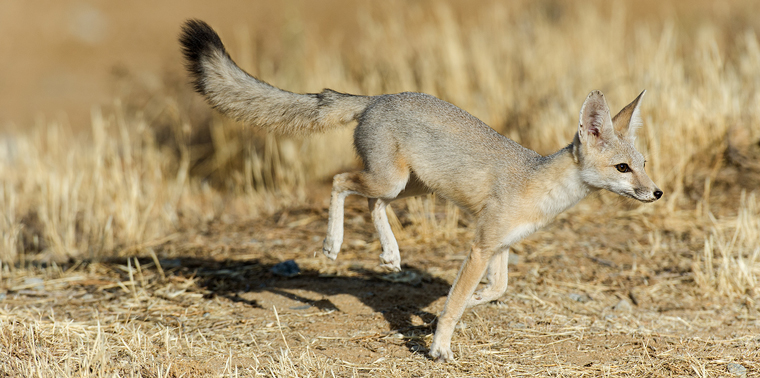October 2, 2018 — With Earth in the throes of what many scientists consider our planet’s sixth mass extinction — as living organisms disappear, and even many of those seen as “species of low concern” are stricken by plunging populations and increasingly constricted ranges — conservation is a global concern.
Part of the problem is space: Humans take up a lot of land, with farming alone hogging almost 40 percent of land on Earth. Even if we muster the other resources needed for conserving endangered and threatened species, the question remains: Where do we put plants and animals we want to save?
One answer: Devote retired agricultural land to species on the edge.
In a review paper published in August in Ecosphere, Chris Lortie, senior fellow with the National Center for Ecological Analysis and Synthesis, and colleagues reported the results of their investigation into exactly that strategy. They zoomed in to California’s San Joaquin Valley, or San Joaquin Desert.
Today, agriculture and industry cover some 90 percent of the area, which has one of the continental United States’ highest concentrations of at-risk species. In 2014, the state passed groundwater legislation that could require retirement of hundreds of thousands of acres of farmland in the area, creating stretches of otherwise unused land that could be adopted for conservation purposes. In the new study, the researchers synthesized findings from more than 250 scientific journal articles relevant to using retired farmland for conservation in the San Joaquin desert.
“This review suggests that retired agricultural land is a viable asset for threatened and endangered species,” the researchers wrote. But the specifics vary from place to place, and in the San Joaquin Desert, as in other areas, they say that specialists would need to test various restoration techniques and figure out how much such efforts would cost.

The endangered San Joaquin kit fox is among many animals that could benefit from turning retired farmland back into wildlife habitat. Photo © iStockphoto.com/brentawp
To gain insight into how agricultural land might be turned toward conservation purposes, the researchers focused on three endangered animals: the San Joaquin kit fox, the giant kangaroo rat and the blunt-nosed leopard lizard, all of which are found only in the San Joaquin Valley. After poring over the journal articles and additional materials from universities and government agencies in California, the researchers summarized some key conclusions.
First, they found that large amount of land in the San Joaquin Valley was once suitable habitat for the three species, but habitat loss has left them struggling for places to live. Retired agricultural land, the authors say, could be useful not only as habitat for endangered endemic species, but also as pathways allowing animals to move between existing populations, which might help those populations maintain genetic diversity. The researchers also say that retiring agricultural land near existing animal habitat will boost the chance of successful conservation.
But it’s not just a matter of setting land aside for conservation. Restoration efforts would need to cut down on the prominence of exotic plants and find ways, such as mulch and irrigation, to combat the challenges recent droughts pose for reintroduced native species.
While the researchers gleaned this information from the hundreds of studies they reviewed on the San Joaquin Desert, they found few projects directly experimenting with restoration on the ground. They also turned up no information on how much it might cost to turn former farmlands into new habitat.
While the study used the San Joaquin Desert as a case study, its main lessons likely hold true in many other areas as well. The bottom line: retired farmland could be a valuable asset for conserving endangered and threatened species, but the more we know about how to do it right — and the more we pay attention to those lessons — the more effective conservation strategies will be. ![]()
Ensia shares solutions-focused stories free of charge through our online magazine and partner media. That means audiences around the world have ready access to stories that can — and do — help them shape a better future. If you value our work, please show your support today.
Yes, I'll support Ensia!
